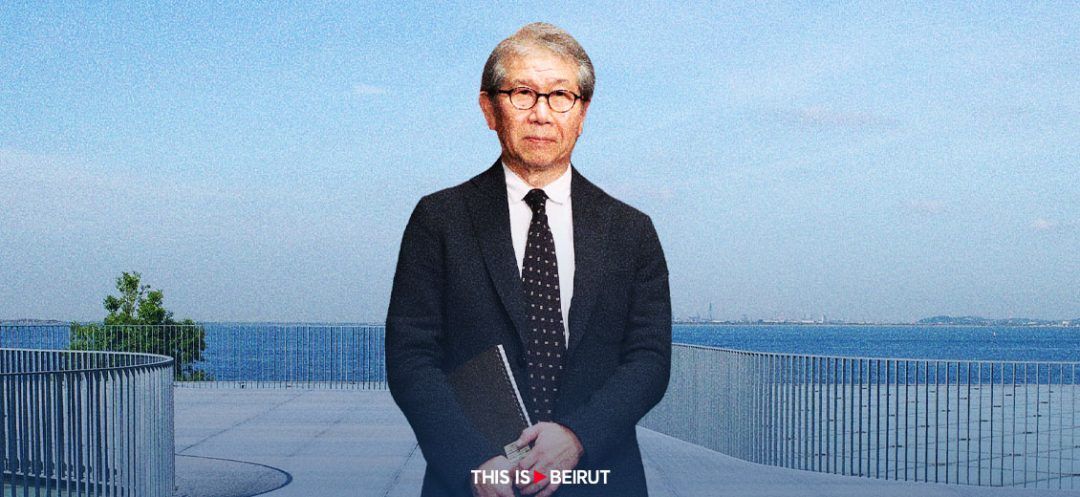
The Pritzker Architecture Prize winner, Japan's Riken Yamamoto, has dedicated his career to creating buildings that bring joy to the people who inhabit them. With his innovative designs and people-centric approach, Yamamoto has solidified his position as one of the world's most influential architects, reminding us that the true essence of architecture lies in its ability to foster human connection and happiness.
The Pritzker Architecture Prize, often referred to as architecture's highest honor, has been awarded annually since 1979. Established by the Pritzker family, known for their involvement in the Hyatt hotel chain, the prize recognizes architects who have made significant contributions to the field and demonstrated a commitment to excellence in their work. Over the years, the Pritzker Prize has honored many renowned architects, including Frank Gehry, Zaha Hadid and Rem Koolhaas.
Japan has a particularly strong presence in the Pritzker Prize's history, with Riken Yamamoto becoming the ninth Japanese architect to receive the award. Other notable Japanese winners include Kenzo Tange (1987), Fumihiko Maki (1993), Kazuyo Sejima and Ryue Nishizawa (2010) and Arata Isozaki (2019). Tom Pritzker, the son of the prize's founder, attributes Japan's success to the country's deep connection with nature, which he believes enables Japanese architects to make sensitive and impactful contributions to the field.
Born in Beijing but raised in Japan, Riken Yamamoto has spent his career pursuing a singular goal: creating architecture that brings joy to the people who experience it. His designs are characterized by their transparency, openness and ability to promote human contact and interaction. Yamamoto's work spans a wide range of projects, from schools and museums to fire stations and airports, each one carefully crafted to foster a sense of community and well-being.
One of Yamamoto's most celebrated projects is the Koyasu Elementary School in Yokohama, Japan. The school's design features terraces that connect every classroom, encouraging the 1,000 pupils to mix and interact with one another. This innovative layout not only promotes social interaction but also creates a sense of unity and belonging among the students.
Another notable example of Yamamoto's people-centric approach is the Hiroshima Nishi Fire Station. The station's transparent design allows the public to see the fire engines and personnel inside, fostering a sense of connection between the firefighters and the community they serve. Similarly, the Yokosuka Museum of Art immerses visitors in the natural scenery, creating a seamless integration between the built environment and the surrounding landscape.
Riken Yamamoto's influence extends far beyond the borders of Japan. His international projects, such as The Circle complex at Zurich Airport in Switzerland and the Tianjin Library in China, showcase his ability to create spaces that resonate with people from diverse cultural backgrounds. The Tianjin Library, in particular, has garnered widespread praise for its light-filled interior and expansive walls of books, creating an inviting and inspiring atmosphere for visitors.
Yamamoto's win serves as a reminder of the crucial role that architecture plays in shaping our daily lives and the importance of designing spaces that prioritize human well-being. In an increasingly urbanized world, it is essential that architects consider the emotional and social impact of their designs, creating buildings that not only serve their intended function but also contribute to the happiness and contentment of the people who use them.
As Yamamoto himself stated upon receiving the Pritzker Prize, his long-term objective is to design architecture that can bring joy to people, not just to his clients. This sentiment underscores the responsibility that architects have to create spaces that are not only aesthetically pleasing but also emotionally and socially fulfilling.
The Pritzker Architecture Prize, often referred to as architecture's highest honor, has been awarded annually since 1979. Established by the Pritzker family, known for their involvement in the Hyatt hotel chain, the prize recognizes architects who have made significant contributions to the field and demonstrated a commitment to excellence in their work. Over the years, the Pritzker Prize has honored many renowned architects, including Frank Gehry, Zaha Hadid and Rem Koolhaas.
Japan has a particularly strong presence in the Pritzker Prize's history, with Riken Yamamoto becoming the ninth Japanese architect to receive the award. Other notable Japanese winners include Kenzo Tange (1987), Fumihiko Maki (1993), Kazuyo Sejima and Ryue Nishizawa (2010) and Arata Isozaki (2019). Tom Pritzker, the son of the prize's founder, attributes Japan's success to the country's deep connection with nature, which he believes enables Japanese architects to make sensitive and impactful contributions to the field.
Born in Beijing but raised in Japan, Riken Yamamoto has spent his career pursuing a singular goal: creating architecture that brings joy to the people who experience it. His designs are characterized by their transparency, openness and ability to promote human contact and interaction. Yamamoto's work spans a wide range of projects, from schools and museums to fire stations and airports, each one carefully crafted to foster a sense of community and well-being.
One of Yamamoto's most celebrated projects is the Koyasu Elementary School in Yokohama, Japan. The school's design features terraces that connect every classroom, encouraging the 1,000 pupils to mix and interact with one another. This innovative layout not only promotes social interaction but also creates a sense of unity and belonging among the students.
Another notable example of Yamamoto's people-centric approach is the Hiroshima Nishi Fire Station. The station's transparent design allows the public to see the fire engines and personnel inside, fostering a sense of connection between the firefighters and the community they serve. Similarly, the Yokosuka Museum of Art immerses visitors in the natural scenery, creating a seamless integration between the built environment and the surrounding landscape.
Riken Yamamoto's influence extends far beyond the borders of Japan. His international projects, such as The Circle complex at Zurich Airport in Switzerland and the Tianjin Library in China, showcase his ability to create spaces that resonate with people from diverse cultural backgrounds. The Tianjin Library, in particular, has garnered widespread praise for its light-filled interior and expansive walls of books, creating an inviting and inspiring atmosphere for visitors.
Yamamoto's win serves as a reminder of the crucial role that architecture plays in shaping our daily lives and the importance of designing spaces that prioritize human well-being. In an increasingly urbanized world, it is essential that architects consider the emotional and social impact of their designs, creating buildings that not only serve their intended function but also contribute to the happiness and contentment of the people who use them.
As Yamamoto himself stated upon receiving the Pritzker Prize, his long-term objective is to design architecture that can bring joy to people, not just to his clients. This sentiment underscores the responsibility that architects have to create spaces that are not only aesthetically pleasing but also emotionally and socially fulfilling.
Read more



Comments